
The sun was getting low over Bardia National Park, Nepal. As wildlife photographer Emmanuel Rondeau and his guide made their way back to camp, they spotted a group of chital deer not far from the park’s border. Huddling tightly and casting furtive glances towards the undergrowth, the deer’s behaviour suggested they were not alone. But it was impossible to identify any potential threat in the metre-high grass.
The guide pulled up next to a tree and began to climb. Emmanuel followed. Suddenly, the guide stopped in his tracks, and uttered the one word Emmanuel had hoped to hear since he’d started his quest five years previously: “Tiger!”
It took a moment for Emmanuel to spot his quarry, perfectly camouflaged among grasses burnt yellow by the sun. It was his first wild encounter with a tiger after documenting the big cat, first in Russia, then Bhutan and now Nepal. As if that wasn’t enough, the guide then spotted a second tiger, lying quietly in a closer patch of vegetation. Emmanuel was incredibly lucky. After decades of uncontrolled persecution and relentless habitat destruction, wild tiger populations have declined by more than 95 per cent – from an estimated 100,000 to as few as 3,200 12 years ago.
With the species this far gone, it has become clear that saving tigers from extinction will only be achieved through global co-operation. And so, in 2010, leaders from 13 tiger range countries came together in St Petersburg for the first International Tiger Conservation Forum. There, they endorsed a Global Tiger Recovery Programme (GTRP) and made an unprecedented pledge: to double the number of tigers in the wild by 2022, the next Chinese Year of the Tiger.
Denne historien er fra May 2021-utgaven av BBC Wildlife.
Start din 7-dagers gratis prøveperiode på Magzter GOLD for å få tilgang til tusenvis av utvalgte premiumhistorier og 9000+ magasiner og aviser.
Allerede abonnent ? Logg på
Denne historien er fra May 2021-utgaven av BBC Wildlife.
Start din 7-dagers gratis prøveperiode på Magzter GOLD for å få tilgang til tusenvis av utvalgte premiumhistorier og 9000+ magasiner og aviser.
Allerede abonnent? Logg på

SNAP-CHAT
Justin Gilligan on giant spider crabs and holding hands with an octopus
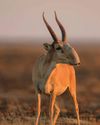
STEPPE CHANGE
Herds of saiga have returned to Kazakhstan, but there's a fine balance to tread
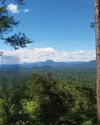
TREES FOR LIFE
Community is at the heart of conservation in the tropical forests of southern Belize
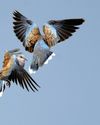
WHEN DOVES CRY
Turtle doves are now the UK's fastest declining bird species, but the RSPB is on a mission to save them

SURVIVAL OF THE CUTEST
We can't help being drawn to cute creatures, but our aesthetic preferences both help and hinder conservation

LIGHT ON THE NORTH
Spectacular images of Arctic foxes, reindeer and musk oxen reveal the wild beauty and diversity of Scandinavia

ROLLING IN THE DEEP
The super-sized crustacean that lives in the deepest, darkest ocean
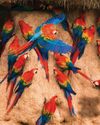
LET'S GET TOGETHER
Clay licks deep in the Amazon explode in a riot of colour, with macaws the stars of the show

FEMALE OF THE SPECIES
To sponge or not to sponge? That is the question for the bottlenose dolphins (Tursiops aduncus) living in Shark Bay, Western Australia.
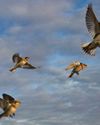
7 nature encounters for the month ahead
WITH NATURALIST AND AUTHOR BEN HOARE